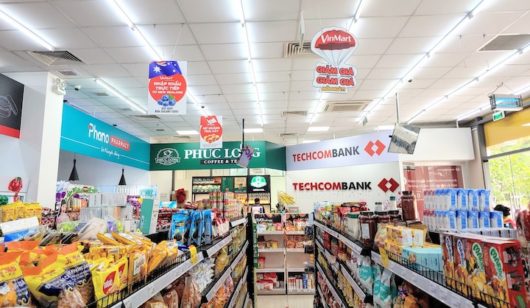Chinese retail is entering an “Age of Empires” as the nation’s largest e-commerce players rapidly expand their scope and reach through a wave of investments and acquisitions.
According to a new report by consultancy Oliver Wyman, the two empires are Alibaba – which owns two of China’s largest e-commerce platforms, Taobao and TMall, and the electronic payments system, AliPay – and JD.com, which has allied with WeChat’s parent Tencent.
The report, Chinese Grocery’s Age of Empires, analyses how the two players’ ubiquity in mobile payments, deep consumer data and sophisticated logistics capabilities has created a new retail ecosystem in China, where incumbents must quickly adapt to survive.
“With the grocery sector seeing mobile payment penetration of 35 per cent, the two giants are seeking to maximise their critical advantage of dominance in covering 97 per cent of the overall mobile payment market,” says Richard McKenzie, partner, Greater China at Oliver Wyman. “Now their investments are rapidly building a wider ecosystem of alliances that will make them ubiquitous through online-to-offline tools and features.”
The report reveals the e-commerce giants’ efforts to drive further growth by introducing new O2O shopping formats, which blend online shopping’s convenience and wealth of information with the social experience and physical contact with products that people enjoy in traditional, brick-and-mortar stores.
“This is most immediately visible in the online grocery sector, where Alibaba and Tencent/JD are actively pursuing three strategic plays that could together increase their share of grocery shopping from around 10 per cent today to around 30 per cent over the next five years. By then it could be worth approximately 400 billion renminbi in gross merchandise value,” the report concludes.
More than 460 million people in China regularly shop online, where densely populated cities facilitate easy home delivery.
“As a result, China has leapfrogged other markets to take the lead with nearly 10 per cent of the population shopping for groceries online, compared to just 3 per cent in the US and 6 per cent in the United Kingdom, Europe’s highest rate.”
Oliver Wyman says such rapid change favours the two giant empires, which could make it hard for independent retailers to survive outside of them, evidenced by declining like-for-like sales and margins among China’s traditional supermarkets and convenience stores over the past few years. However, they may yet survive in some form with help from the online giants themselves, leveraging the empires’ logistics networks, rapid delivery services and new software solutions.
Both empires are building their O2O power through three plays, each of which blends their online capabilities with offline stores in new ways:
- Experimentation with own retail formats
Unlike supermarkets elsewhere that offer online shopping in parallel with a traditional in-store experience, China’s players integrate elements of the two. For example, Alibaba’s Hema stores offer smartphone payment and home delivery within 30 minutes. Though expensive to set up and with high initial running costs, these stores are only marginally loss making. With further maturity and ramp up, breaking even is within reach. Oliver Wyman believes there is potential for at least 1000 stores in major cities with total revenues of RMB 200 billion.
- Strategic partnership with Big Box retailers
Big-box retailers have tried and failed to launch their own O2O and online shopping services in the past. Amid pressure from the online giants, a flurry of partnerships has seen large retailers aligning themselves with the two tech empires. These show early signs of success as parties combine their different strengths. Examples include Alibaba installing Tmall Supermarket shelves in RT-mart branches, with one-hour home delivery for products on these shelves, while Walmart, which has a strategic partnership with JD, is using its O2O unit JD Daojia as the service platform for over 150 stores to attract online traffic.
- Reinvention of the traditional world of “mom and pop” shops
Traditional stores still account for half the sales of fast-moving consumer goods in China, much of them through the more than 7 million family-run stores that dominate retail outside big cities. Since early 2017, JD and Alibaba have been converting these into franchises, helping them optimise their stock through data-based curation tailored to their neighbourhoods. Smartphone-based ordering systems and rapid delivery have also revolutionised procurement. Tmall planned to open 10,000 such franchises in 2017, while JD is aiming for 1 million by 2021. Alibaba and JD are further likely to dominate the growing market for their ordering systems, a market that could be worth up to RMB 400 billion over the next five years.
- China surpasses US
Wai-Chan Chan, partner, Greater China at Oliver Wyman notes: “China has not only surpassed the US in terms of online grocery penetration but also in terms of the pace of innovation and introduction of value-added services. Customers at a Hema store can pay seamlessly via their mobile phone, have fresh crayfish cooked in-store and delivered to their home within 30 minutes. Players in other markets are still some way behind in matching that offering.”
As O2O becomes the new normal in retail, the two alliances will act as both players and facilitators of these models. While retailers and brands need to plan the best way to function in a retail world dominated by the two tech empires, identifying opportunities for synergy, it will pose a more serious challenge for some incumbents.
Oliver Wyman says the new environment will pose serious challenges to independent supermarkets and hypermarkets. Survival will require drastic changes, but this is unlikely under their current set-up. Some leading convenience stores should be able to survive outside these empires in the short term, but they too will come under threat in time from the revival of family-run stores under the franchise networks run by the two giants.
“The tech empires will inevitably influence the shape and future of the supermarket and hypermarket industry. It is crucial for incumbents to find ways to partner or co-exist with them if they are to survive and thrive.”






